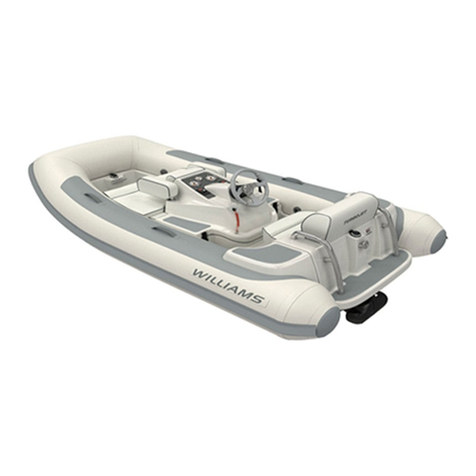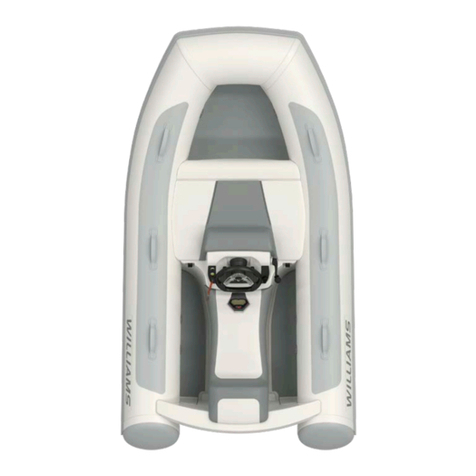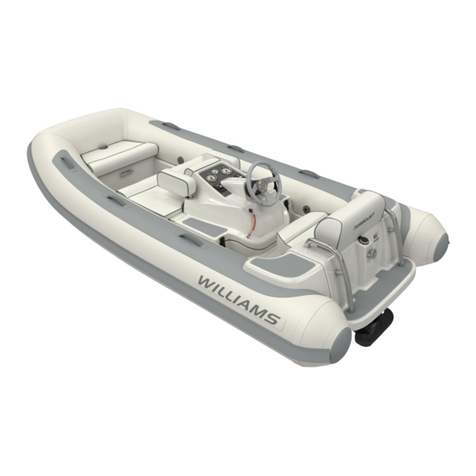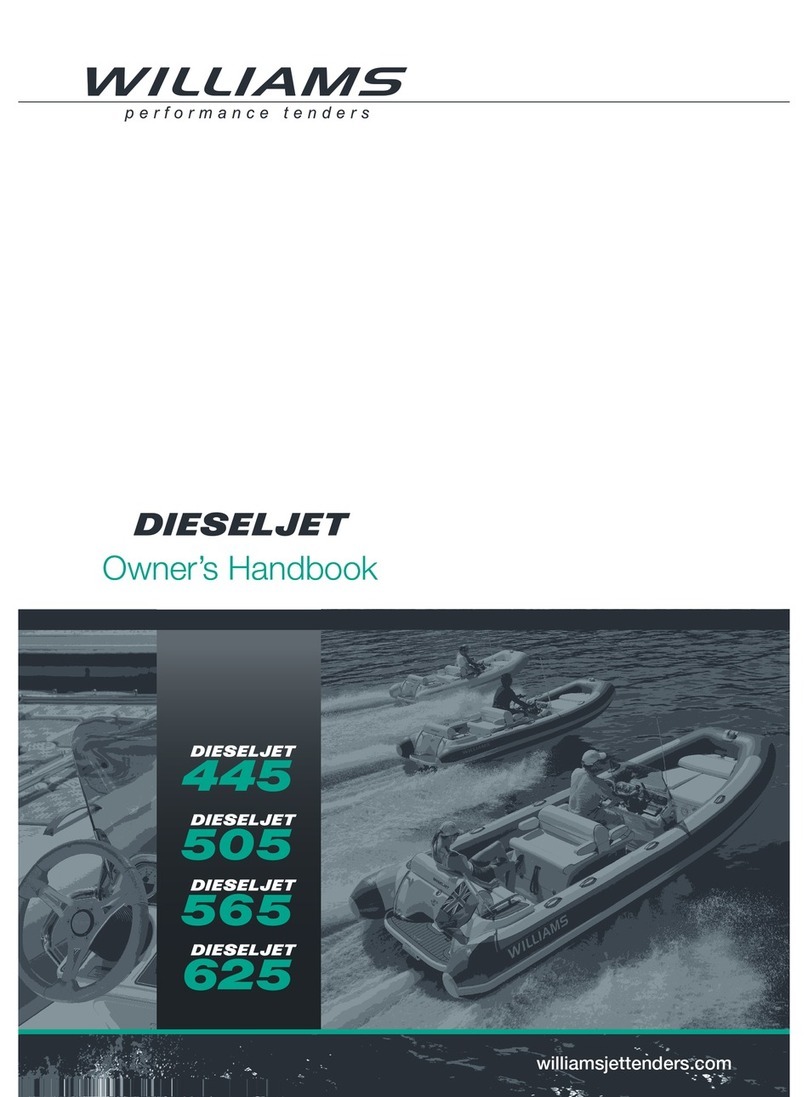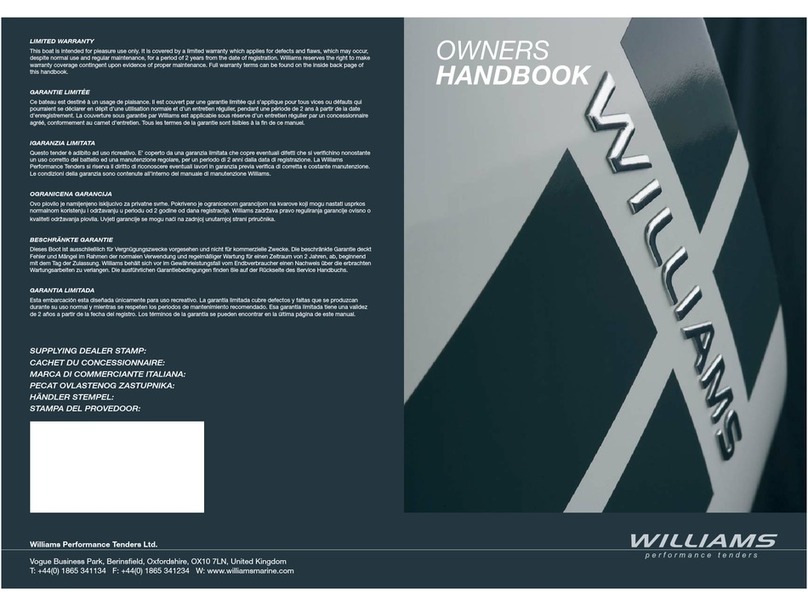
ENGLISH
6
WILLIAMSJETTENDERS.COM
•Always perform the pre-use inspection
as specified in this book (see page 14).
• Do not exceed the payload or passenger
capacities for this boat; these are listed on the
capacity plate located inside the helmsman’s
footwell, and in the specifications in this
manual.
• Overloading or an uneven load
can affect manoeuvrability, stability and
performance. Do not exceed the data on the
builder’s plate.
• Regularly inspect the boat, hull, engine,
safety equipment, and all other boating gear
and keep them in safe operating condition.
Before Getting Underway
ENGLISH
6
WILLIAMSJETTENDERS.COM
• Engine exhaust contains carbon
monoxide (CO), which can cause injury
or death if inhaled in sufficient quantities.
Educate all occupants about the risks and
symptoms of CO accumulation and CO
poisoning.
• Fuel vapors can explode, resulting in
injury or death. Always use the bilge blower
for a minimum of 4 minutes before starting
the engine, then turn it OFF above idle
speed. Use of the the bilge blower should
never replace checking for fuel vapor odours.
• If at any time, fuel leaks/odours are
found, do not start the engine. Have the boat
serviced by an authorized Williams dealer.
• Always keep in mind that as the throttle
is returned to the idle position, less directional
control is available. To turn the boat, both
steering and throttle are necessary.
• This boat has no brake. Stopping
distance will vary depending on initial speed,
load, wind and water conditions. Practice
stopping and docking in a safe, traffic-free
area to have an idea of how long it will take
to stop the boat under varying conditions.
• Do not release the throttle when trying
to steer away from objects. You need throttle
to steer. Do not use the boat’s reverse to stop.
• Do not start or operate the boat if
any person is not properly seated in a seat
intended for use when underway (refer to
boat this manual) or if a person is nearby in
the water.
• The boat’s jet thrust can cause injury.
Always accelerate slowly, and decelerate in a
controlled fashion.
• Observe the instructions on all safety
labels. They are there to help assure that you
have a safe and enjoyable outing.
• Riding with passenger(s) or pulling
other boats, tubes, a skier or a wakeboarder
makes the boat handle differently and
requires greater skill.
• Rear seats must not be used when
water skiing or wakeboarding is taking place.
• Always attach the kill cord. Should the
driver move away from, or be thrown from
the helm position, the kill cord will detach
from the console and the engine will stop.
Detaching the kill cord also allows a crew
member or passenger to stop the engine
if the driver were to become incapacitated
whilst at the helm, e.g. if they fainted.
• Always check your kill cord works at
the start of each day or session and check it
regularly for signs of wear.
• Do not leave kill cords out in the
elements. Extremes of temperature and UV
light will harm the kill cord in the long term.
• If your kill cord has lost its spiral
tension, replace it.
• When replacing kill cords, purchase
Williams’s own kill cord.
Special Safety Messages



